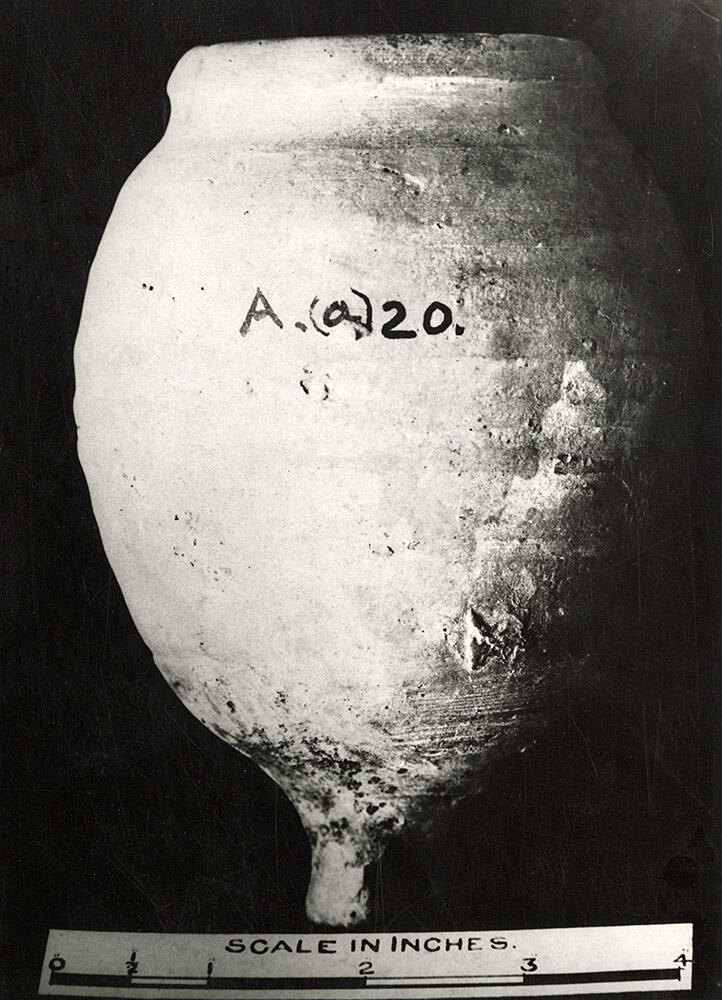"In order to trace some more walls of the two blocks of the Great Granary Mr. Sahni made a few stray extensions about the centre of Trench A both towards the east and west. In the former direction, that part which lies to the north of corridor e was termed Ab, and the one to the south as Aa, while the two small westward extensions were termed Ac and Ad."
- Madho Sarup Vats, Excavations at Harappa: Being an account of archaeological excavations at Harappa carried out between the years 1920-21 and 1933-34. Volume I - Text; Volume II - 139 Plates., pg 23.
This is a diagnostic disposable drinking vessel used during the Harappa Phase, periods 3B and 3C. Thousands of complete vessels of this type are found in drains, sump pots and discarded debris from throughout the site. The narrow grooves on the exterior provide a good grip when holding the vessel and if the liquid is hot, they provide a corrugated surface that keeps the fingers from being burned by the hot beverage. The pointed base indicates that they were not to be set down but just discarded. During firing of these vessels the discoloration of the lower part indicates that they were stacked one inside the other in the kiln. They also may have been stored upside down and stacked one on top of the other before being used.
See Kenoyer, J. M. 1998. Ancient Cities of the Indus Valley Civilization. Karachi, Oxford University Press, p. 154-155, Fig. 8.18.
See also the pointed base goblets from more recent excavations.
- Jonathan Mark Kenoyer, 2023.
[Original caption] well preserved earthenware lota [A(a) 20]
Extensions Ab, Aa, Ad and Ae (Mound F)

